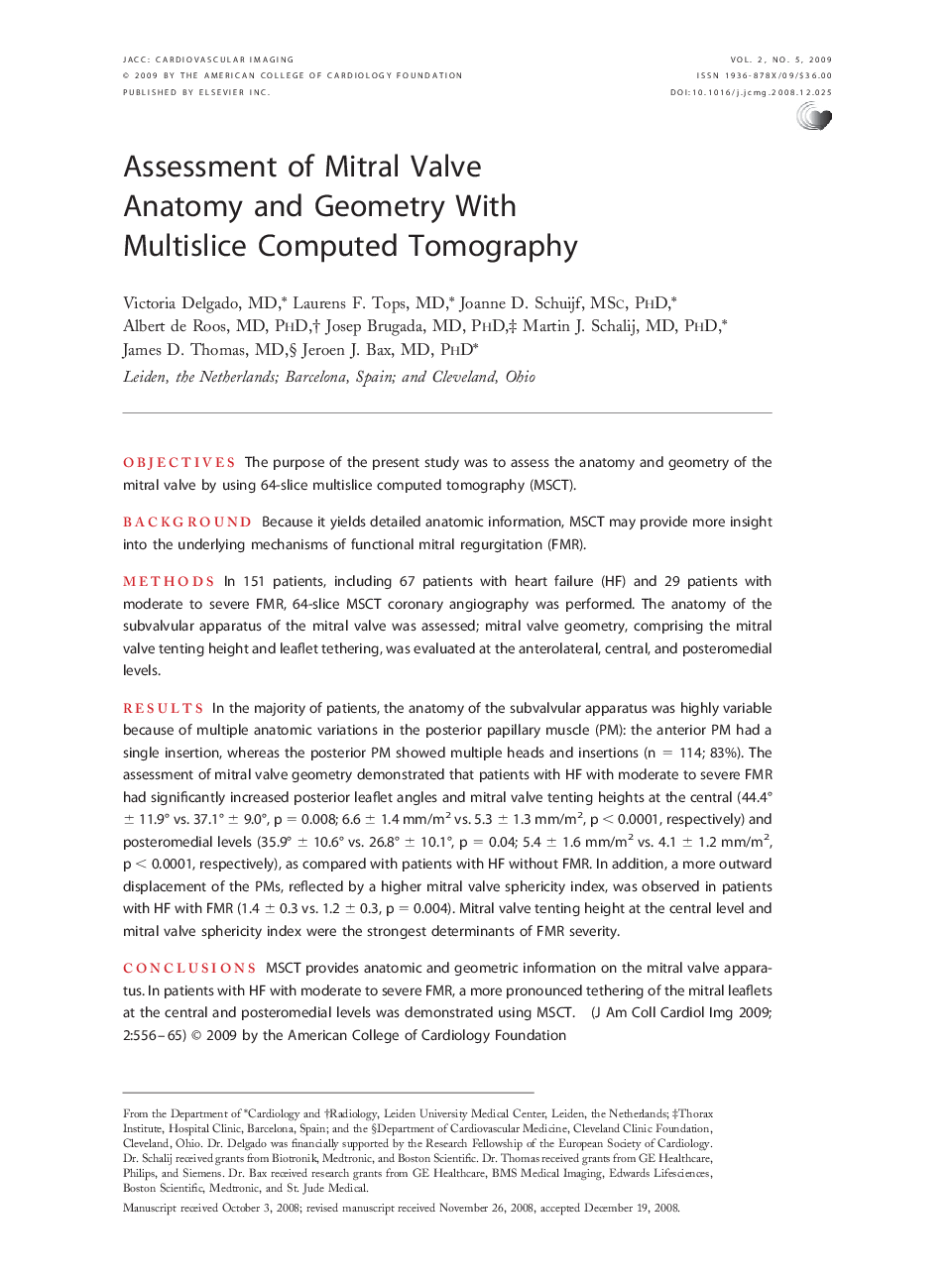| کد مقاله | کد نشریه | سال انتشار | مقاله انگلیسی | نسخه تمام متن |
|---|---|---|---|---|
| 2939115 | 1176973 | 2009 | 10 صفحه PDF | دانلود رایگان |

ObjectivesThe purpose of the present study was to assess the anatomy and geometry of the mitral valve by using 64-slice multislice computed tomography (MSCT).BackgroundBecause it yields detailed anatomic information, MSCT may provide more insight into the underlying mechanisms of functional mitral regurgitation (FMR).MethodsIn 151 patients, including 67 patients with heart failure (HF) and 29 patients with moderate to severe FMR, 64-slice MSCT coronary angiography was performed. The anatomy of the subvalvular apparatus of the mitral valve was assessed; mitral valve geometry, comprising the mitral valve tenting height and leaflet tethering, was evaluated at the anterolateral, central, and posteromedial levels.ResultsIn the majority of patients, the anatomy of the subvalvular apparatus was highly variable because of multiple anatomic variations in the posterior papillary muscle (PM): the anterior PM had a single insertion, whereas the posterior PM showed multiple heads and insertions (n = 114; 83%). The assessment of mitral valve geometry demonstrated that patients with HF with moderate to severe FMR had significantly increased posterior leaflet angles and mitral valve tenting heights at the central (44.4° ± 11.9° vs. 37.1° ± 9.0°, p = 0.008; 6.6 ± 1.4 mm/m2 vs. 5.3 ± 1.3 mm/m2, p < 0.0001, respectively) and posteromedial levels (35.9° ± 10.6° vs. 26.8° ± 10.1°, p = 0.04; 5.4 ± 1.6 mm/m2 vs. 4.1 ± 1.2 mm/m2, p < 0.0001, respectively), as compared with patients with HF without FMR. In addition, a more outward displacement of the PMs, reflected by a higher mitral valve sphericity index, was observed in patients with HF with FMR (1.4 ± 0.3 vs. 1.2 ± 0.3, p = 0.004). Mitral valve tenting height at the central level and mitral valve sphericity index were the strongest determinants of FMR severity.ConclusionsMSCT provides anatomic and geometric information on the mitral valve apparatus. In patients with HF with moderate to severe FMR, a more pronounced tethering of the mitral leaflets at the central and posteromedial levels was demonstrated using MSCT.
Journal: JACC: Cardiovascular Imaging - Volume 2, Issue 5, May 2009, Pages 556–565